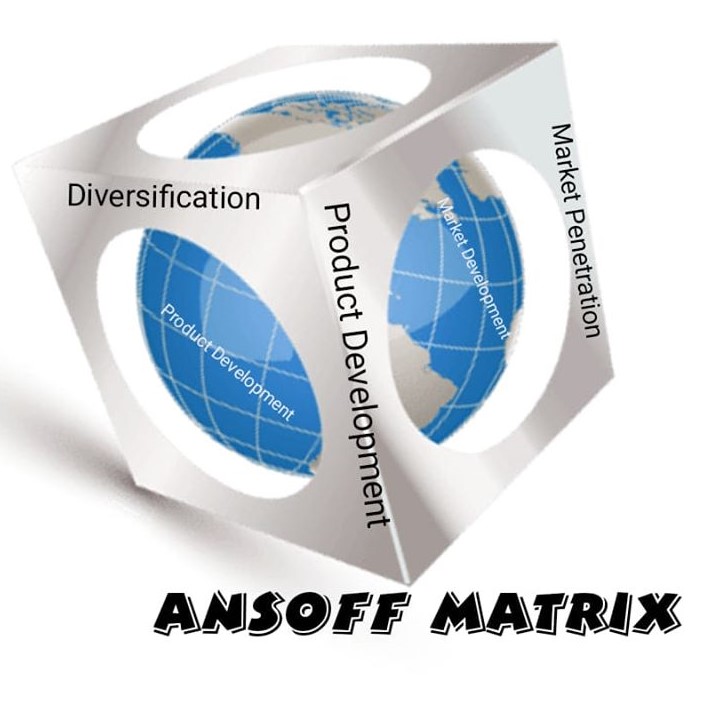McDonald’s was found in 1940 by the couple, Richard and Maurice McDonald. It is an American multinational fast-food company. The company started with hamburgers as its prime product. The company started franchising much later. The company has its headquarters in Chicago, Illinois. Based on revenue, it is the largest fast-food restaurant chain in the world (Forbes, 2017). The company operates in more than 100 nations and serves 69 million customers every day (Bomkamp, 2016). It has more than 38000 outlets across the globe. The company earns from a variety of sources such as renting out facilities, franchise fees, brand royalties, and revenue from company-operated stores. McDonald’s is known in the market for its variety of products, consistency in taste, and quick service. It has proven to be a tough competition for various other fast food restaurant chains.
Following are the four dimensions of the Ansoff Matrix for McDonald’s:
Market Penetration
McDonald’s applies several strategies to promote its existing products in existing markets. The company offers various types of meals that contain combinations of products that include the main item, fries, and a drink. One such example is the happy meal for kids. McDonald’s has also established drive-throughs for its customers to create ease in the purchase. The company also offers home delivery to attract more consumers and serve current consumers better. It also offers discounts on group purchasing. The company also continues to improve the service it offers to its clients in terms of customer service quality and quickness. McDonald’s also uses the strategy of clever pricing. In this strategy, everything is priced ending at .99. It is also involved in aggressively promoting its products in existing markets through various means such as newspaper ads, television ads, billboards, social media, and so on. Under each marketing campaign, the intention is to motivate current customers to try other products on the menu or make them come back for more.
Market Development
McDonald’s develops its markets by launching its existing products in new markets. The main strategy applied by McDonald’s is expanding into new geographic markets. The company already has thousands of outlets in the United States and other markets. The company is present in 121 countries and has plans to launch its outlets in Nigeria, Armenia, Tunisia, and various other nations (Tahilrahmani, 2014). This helps the company promote its existing products in new markets by allowing third parties to establish its franchises serving its products and using its brand name. Further, the company launches customized products based on market nature. For example, the McAlloo Tikkin in India and McArabia in Saudi Arabia. This helps develop attraction by the consumers in these local markets. The company also reduces its prices when entering new markets to help get established and boost the customer base from the start. In all of these strategies, the company is able to enter new markets successfully and increase its revenues.
Product Development
Product development refers to launching new products in the existing markets served by McDonald’s. McDonald’s works hard for understanding consumer needs and then launching new products to satisfy their taste buds. One such example is India. The majority of people in India don’t eat beef. McDonald’s went around and launched an entire menu not having any item containing beef such as McAlloo Tikki, McSpaghetti, McPizza, and Royal Paneer (Azam, 2017). The same has been done for many other nations. Even in the United States, McDonald’s keeps launching new products in its desserts, drinks, and burgers ranges. Oreo McFlurry and M&M’s McFlurry are two examples. All of these strategies help the company launch and succeed with new products in its existing markets.
Diversification
This is the riskiest strategy for McDonald’s. Rather than working on vertical diversification, the company works on horizontal diversification. McCafe was established to compete with Starbucks and other coffee houses. McStops is another venture by the company. McDonald’s has also established a hotel in Switzerland called The Golden Arch Hotel. These are quite different from what the company is already doing. Also, these are established to compete in industries McDonald’s was not a part of before. However, these risky strategies will help McDonald’s succeed and grow their revenues and sales. The company has various other plans in place as a part of its diversification strategy.
References
Azam, A.A., 2017. Mc Donald’s Ansoff Matrix. [Online] Available at: https://www.slideshare.net/AtiyaAzmi/mc-donalds-ansoff-matrix [Accessed 24 Dec. 2019].
Bomkamp, S., 2016. McDonald’s future Near West Side neighbors air parking, traffic safety beefs. [Online] Available at: https://www.chicagotribune.com/business/ct-mcdonalds-headquarters-plan-0623-biz-20160621-story.html [Accessed 24 Dec. 2019].
Forbes, 2017. McDonald’s Is King Of Resaurants In 2017. [Online] Available at: https://www.forbes.com/pictures/591c79084bbe6f1b730a5811/2017-global-2000-restaura/#55f3b55c6d2a [Accessed 24 Dec. 2019].
Tahilrahmani, Y., 2014. Ansoff matrix for mcdonalds. [Online] Available at: https://www.slideshare.net/yashrajtahilramani/ansoff-matrix-for-mc-donalds [Accessed 24 Dec. 2019].
